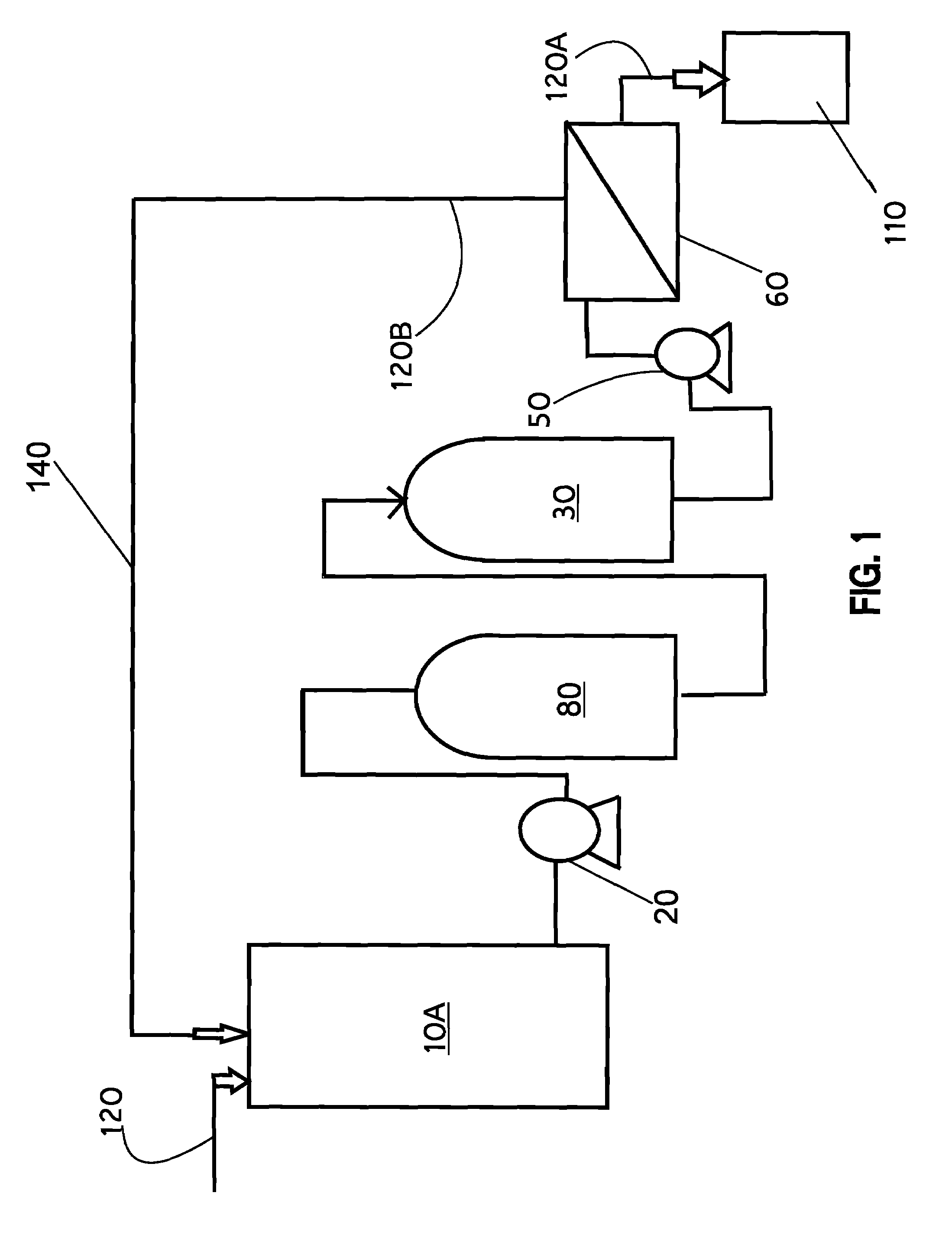Method of rendering a radioactive and aqueous heat transfer liquid in a nuclear reactor to a reduced radwaste quantitative state and returning the remaining waste water volumes to an environmental release point for liquid effluents
a technology of a nuclear reactor and a quantitative state, applied in the direction of nuclear elements, multi-stage water/sewage treatment, separation processes, etc., can solve the problems of inability to remove isotopes from process stream, and inability to effectively treat or process radwaste liquid to quality grade water. , to achieve the effect of reducing the fouling of the ro membrane, reducing the number of to
- Summary
- Abstract
- Description
- Claims
- Application Information
AI Technical Summary
Benefits of technology
Problems solved by technology
Method used
Image
Examples
Embodiment Construction
[0097]The following description of the preferred embodiments of the concepts and teachings of the present invention is made in reference to the accompanying drawing figures which constitute illustrated examples of the teachings, and structural and functional elements, of the present invention; among many other examples existing within the scope and spirit of the present invention.
[0098]Referring now to the drawings, FIGS. 1 through 11, thereof, there are illustrated, by schematic means, exemplary embodiments of the present invention addressing the method and system of maximizing resin utilization within an ion exchange resin, more particularly polishing an aqueous liquid (AF, 120) containing radwaste or plant wastewater and selectively scavenging targeted isotopes and some other dissolved species; shown at 10, and referred to hereafter as the RWRO system, the Method or the invention. The present invention sets forth a unique method or process of utilizing ion exchange resin and reve...
PUM
| Property | Measurement | Unit |
|---|---|---|
| volume | aaaaa | aaaaa |
| pH | aaaaa | aaaaa |
| area | aaaaa | aaaaa |
Abstract
Description
Claims
Application Information
 Login to View More
Login to View More - R&D
- Intellectual Property
- Life Sciences
- Materials
- Tech Scout
- Unparalleled Data Quality
- Higher Quality Content
- 60% Fewer Hallucinations
Browse by: Latest US Patents, China's latest patents, Technical Efficacy Thesaurus, Application Domain, Technology Topic, Popular Technical Reports.
© 2025 PatSnap. All rights reserved.Legal|Privacy policy|Modern Slavery Act Transparency Statement|Sitemap|About US| Contact US: help@patsnap.com



